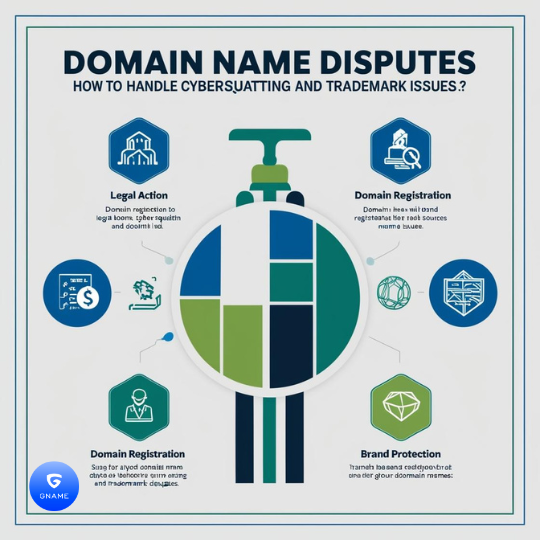In the digital age, domain names are crucial for establishing an online presence. However, with the rise of the internet, domain name disputes have become increasingly common. Cybersquatting and trademark issues can lead to significant challenges for businesses and individuals alike. This blog post will explore the intricacies of domain name disputes, focusing on how to handle cybersquatting and trademark issues effectively.

Understanding Cybersquatting
Cybersquatting occurs when an individual registers a domain name that is identical or confusingly similar to a trademarked name with the intent to sell it at a higher price. This practice takes advantage of the trademark owner's brand recognition and can lead to confusion among consumers. The Anticybersquatting Consumer Protection Act (ACPA) was enacted in the United States to combat this issue, providing trademark owners with legal avenues to challenge cybersquatters.
When faced with a cybersquatting situation, trademark owners should first investigate the motives behind the registration. If it is determined that the domain was registered in bad faith, the owner can file a complaint under the ACPA. Additionally, the World Intellectual Property Organization (WIPO) offers an alternative dispute resolution process that allows parties to resolve their disagreements without going to court.
Trademark Issues in Domain Names
Trademark issues often arise when a domain name incorporates a trademarked term. This can lead to disputes over rights to use the name and potential confusion among consumers. Businesses must conduct thorough research before registering a domain name to ensure it does not infringe on existing trademarks.
If a trademark owner believes that their rights are being violated by a domain name registration, they have several options. One approach is to send a cease-and-desist letter to the domain owner, requesting that they stop using the name. If this does not resolve the issue, the trademark owner may need to initiate legal proceedings. This can involve filing a lawsuit in federal court or pursuing a Uniform Domain-Name Dispute-Resolution Policy (UDRP) complaint, which is a more streamlined process for resolving domain name disputes.
Preventive Measures for Businesses
To avoid becoming embroiled in domain name disputes, businesses should take proactive steps. One of the most effective strategies is to conduct a comprehensive trademark search before registering a domain name. This process helps identify potential conflicts with existing trademarks and allows businesses to make informed decisions about their branding.
Additionally, businesses should consider registering variations of their domain names and relevant extensions (e.g., .com, .net, .org) to prevent cybersquatters from capitalizing on their brand. Monitoring domain registrations regularly can also help businesses stay informed about potential infringements and take action if necessary.
The Role of Legal Counsel
Navigating domain name disputes can be complex, and seeking legal counsel is often beneficial. An experienced attorney can provide guidance on trademark law, help assess the strength of a case, and develop a strategy for addressing disputes effectively. Legal counsel can also assist in drafting cease-and-desist letters and represent clients in UDRP proceedings or court cases if needed.
In conclusion, domain name disputes, particularly those involving cybersquatting and trademark issues, can pose significant challenges for businesses and individuals. By understanding the nature of these disputes, taking preventive measures, and seeking legal counsel when necessary, trademark owners can protect their rights and preserve their online presence. Being proactive and informed is essential in navigating the complexities of domain name disputes in today's digital landscape.























